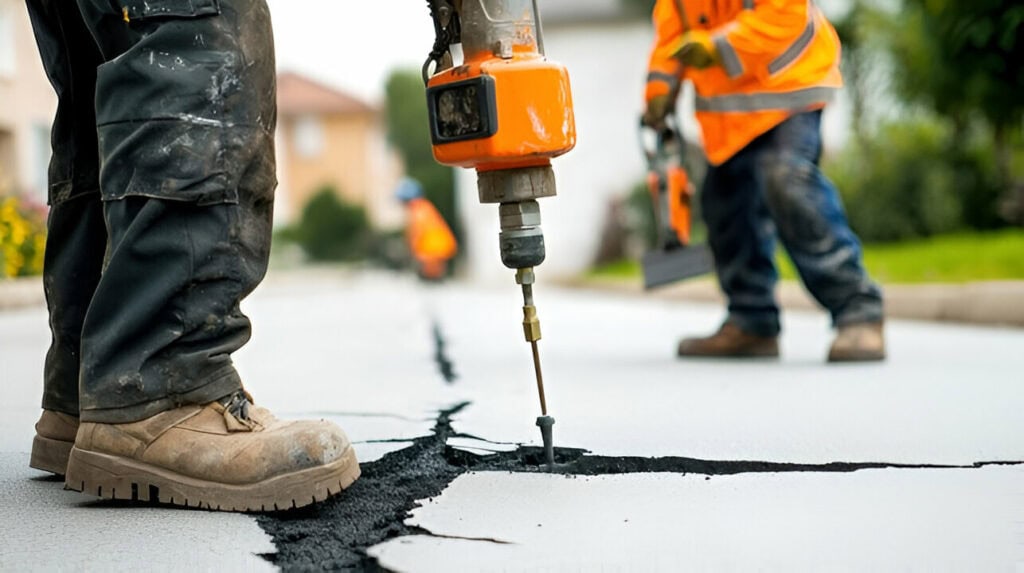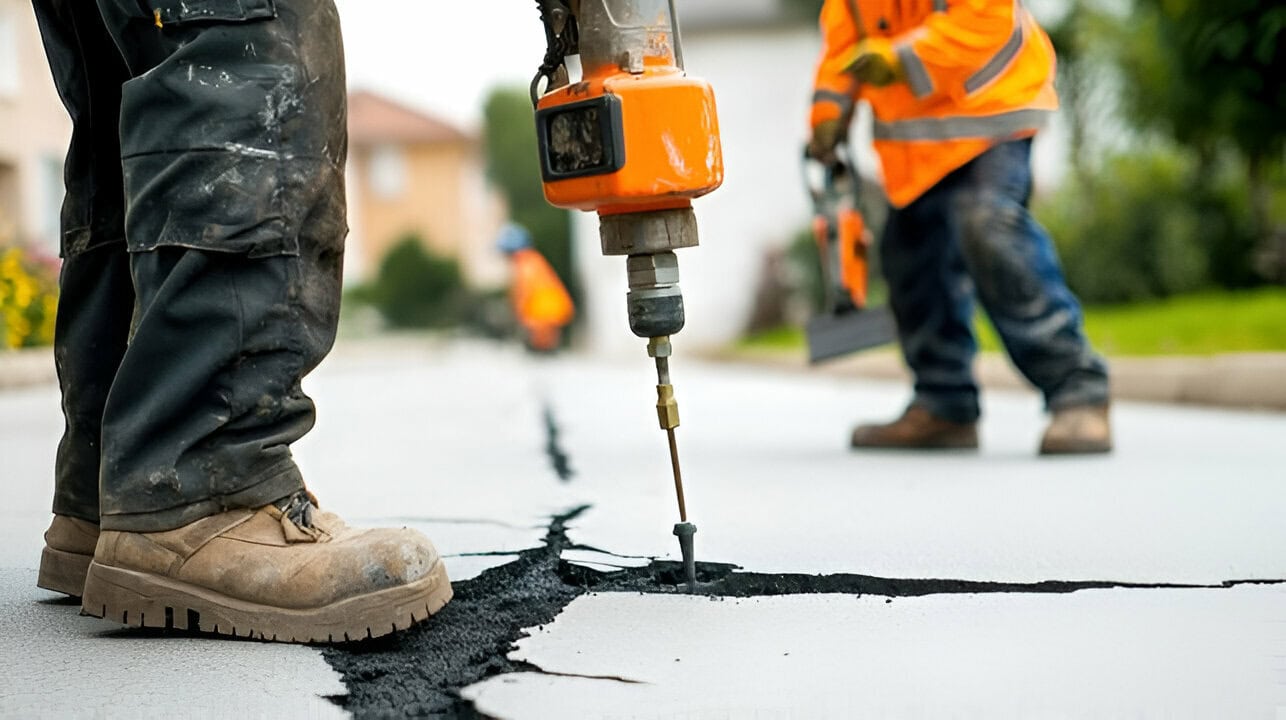As a concrete contractor with 15 years of experience in Colombia,SC I’ve seen just about every type of concrete crack you can imagine. Today, I’ll share my knowledge to help you understand and fix concrete cracks in your property. Let’s dive into what you need to know about keeping your concrete slabs strong and stable.
Why Should You Care About Concrete Cracks?
Your concrete slabs do more than just sit there looking pretty. They’re the foundation of your driveways, patios, and even your home. When cracks appear, they can let water seep in, leading to bigger problems down the road.

In fact, according to my experience, small cracks that go unrepaired can grow up to 300% wider within just one year in Colombia’s tropical climate.
What’s Causing Those Cracks?
Let me tell you about Seven Oaks, South Carolina, one of my recent clients. She noticed cracks in her driveway and thought it was just age. But the real culprit was a combination of factors. The most common causes I see in my daily work include:
The Colombian Heat Factor: Our intense sun causes concrete to expand and contract daily. This temperature cycling leads to stress cracks over time.
Soil Stories: In areas like Medellín’s hillsides, soil movement accounts for about 40% of the concrete cracks I repair.
Tree Trouble: Those beautiful ceiba trees? Their roots can crack concrete from below. I’ve seen this cause about 25% of patio cracks.
Understanding Your Crack: Is It Serious?
Here’s a simple way to think about crack severity. Take a coin from your pocket – if the crack is thinner than a Colombian peso, it’s probably a hairline crack. These make up about 60% of all cracks I see and are usually cosmetic.
If the crack is wider than your thumb, you’re looking at what we call a structural crack. These bad boys need immediate attention. Last year, I dealt with over 200 structural cracks, and 85% of them could have been less severe with early intervention.
DIY Repairs: What You Can Handle Yourself
For those smaller cracks, you can be your own contractor. Here’s what works best:
For Hairline Cracks: I recommend using concrete caulk for surface cracks. It costs about $30,000 ($8 USD) and will last you about 2-3 years in our climate. Make sure you clean the crack thoroughly – I use a wire brush followed by compressed air to remove all debris.
For Minor Cracks: Get yourself a good patching compound. I’ve had great success with epoxy-based products that cost around $ 75,000 ($20 USD) per kit. They’re worth every $ because they last up to 5 years when applied correctly.
When Should You Call Someone Like Me?
Last month, I visited a home in Cali where the owner had tried to fix a serious crack himself. Unfortunately, this led to more expensive repairs. You should call a professional when:
Your crack is wider than 6mm (about the width of a pencil) You see the crack growing actively The slab has multiple cracks forming a pattern You notice one side of the crack is higher than the other
Professional Solutions We Use
In my company, we use several proven methods:
Helical Piers: For serious foundation issues, these provide amazing support. They cost between 2-3 million $ per pier but offer a permanent solution.
Mudjacking: This is my go-to for sunken slabs. It costs about 50% less than replacement and takes just a few hours. Last year, I successfully lifted over 100 slabs using this method.
Preventing Future Problems
Prevention is always cheaper than repair. Here’s what I tell all my clients:
Install proper drainage – it costs about $ 500,000 but can save millions in repairs Seal your concrete every 2 years – a $ 200,000 investment that doubles your concrete’s life Add control joints every 2-3 meters during installation – this reduces random cracking by up to 70%
Safety First!
When working with concrete, always protect yourself. I’ve seen too many DIY attempts go wrong because people skip safety gear. A good set of safety equipment costs about $100,000 – much cheaper than a trip to the emergency room.
Time to Act
Remember, every crack tells a story, and addressing them early saves money and headaches. In my 15 years of experience, I’ve seen small cracks turn into 5 million repairs simply because homeowners waited too long.
Need professional help? Look for a contractor with at least 5 years of experience and always ask for references. A good contractor will be happy to show you their previous work and explain their repair process in detail.
Want to learn more or need help with your concrete cracks? Feel free to reach out to experienced contractors in your area. We’re here to help keep your concrete strong and your property value high.

